 1991 Audi 80 (B4, Typ 8C) Dimensions, Size & Specs
1991 Audi 80 (B4, Typ 8C) Dimensions, Size & SpecsMeasurements of the 1991 Audi 80, engineered for optimal performance and comfort
| Dimensions | |
|---|---|
| Length: | 4405-4482 mm173.4-176.5 in14.5-14.7 ft |
| Width: | 1695 mm66.7 in5.6 ft |
| Height: | 1395-1406 mm54.9-55.4 in4.6-4.6 ft |
| Ground Clearance: | 110-135 mm4.3-5.3 in0.4-0.4 ft |
| Trunk Capacity: | 425-430 liter15.0-15.2 cu ft |
| Trunk Capacity (Max): | 710 liter25.1 cu ft |
| Weight Specifications | |
| Curb Weight: | 1030-1430 kg2271-3153 lbs |
| Maximal permitted Weight: | 1490-1890 kg3285-4167 lbs |
| Tire Specifications | |
| Rims Sizes: | 15-inch rims:
|
| Tire Sizes: |
|
The Audi 80 B4 (Typ 8C) generation, produced between 1990 and 1995, represents a notable evolution in the classic Audi 80 sedan lineage. Introduced in 1991 as a 1991 model year, this generation showcased a refined and aerodynamic design with improved dimensions and practicality. The vehicle's length ranges from 4405 mm to 4482 mm (173.4 to 176.5 inches), while its width is a consistent 1695 mm (66.7 inches). Height varies slightly between 1395 mm and 1406 mm (54.9 to 55.3 inches), offering a low-slung profile that enhances stability and driving dynamics. Weight figures for the Audi 80 B4 vary significantly depending on the specific variant and equipment, with curb weight starting at approximately 1030 kilograms (2271 pounds) and going up to 1430 kilograms (3150 pounds). The maximum weight capacity spans from 1490 kg to 1890 kg (3285 to 4167 pounds), reflecting the vehicle's versatility across different trims and engine options. The Audi 80 B4 provides practical cargo space for a sedan in its class, featuring a luggage capacity between 425 and 430 liters (15.0 to 15.2 cubic feet). When the rear seats are folded down, this expands to about 710 liters (25.1 cubic feet), making it suitable for transporting larger items or luggage for extended trips. The ride height or ground clearance ranges from 110 mm to 135 mm (4.3 to 5.3 inches), balancing comfort with road handling capabilities. This generation rides on a set of wheels typically sized 15 or 14 inches depending on the trim, with rim sizes such as 6J x 15 and 6J x 14, paired with a variety of tires including 175/70 R14, 195/65 R15, 205/60 R15, and 195/70 R15 variants. Overall, the Audi 80 B4 (Typ 8C) sedan delivered a blend of sleek design, balanced dimensions, practical weight, and versatile cargo space, making it a popular choice among mid-size executive cars of the early 1990s. Its size and configuration made it competitive in the segment, offering reliable performance and comfort for everyday use.
Discover the standout features that make the 1991 Audi 80 a leader in its class
Have a question? Please check our knowledgebase first.
The Audi 80 B4 (Typ 8C), produced from 1990 to 1995, measures between 4405 mm to 4482 mm (173.4 to 176.3 inches) in length, with a consistent width of 1695 mm (66.7 inches). Its height ranges from 1395 mm to 1406 mm (54.9 to 55.3 inches), depending on specific model variations. These dimensions make the B4 a compact sedan that fits well within typical parking and urban driving environments.
The Audi 80 B4 offers practical luggage capacities suitable for its class. Without folding the rear seats, it provides between 425 and 430 liters (approximately 15 to 15.2 cubic feet) of luggage space, which is ample for daily use and moderate cargo. When the rear seats are folded down, the capacity increases to 710 liters (around 25 cubic feet), allowing significantly more room for larger items or extended traveling needs.
The curb weight of the Audi 80 B4 ranges from 1030 kg to 1430 kg (approximately 2,271 to 3,153 pounds), depending on the configuration, engine choice, and trim level. Lighter versions benefit from more agile handling and better fuel efficiency, while heavier models often come with additional features and potentially more powerful engines. The weight range reflects the balance between performance, comfort, and safety in this vehicle.
The maximum permissible weight of the Audi 80 B4 ranges between 1490 kg and 1890 kg (approximately 3,285 to 4,167 pounds). This includes the curb weight plus passengers, cargo, and any additional load. It's important to adhere to these limits for optimal vehicle safety and performance, ensuring the suspension and braking systems function correctly and the car's handling remains stable.
The Audi 80 B4 features a ride height or ground clearance that ranges from 110 mm to 135 mm (4.3 to 5.3 inches). This ground clearance is typical for compact sedans of its era, providing a balanced mix of good road handling and practical clearance over speed bumps or uneven surfaces while maintaining a low center of gravity for stability.
The Audi 80 B4, with a length of up to 4482 mm (approximately 14.7 feet), a width of 1695 mm (5.6 feet), and a height up to 1406 mm (4.6 feet), fits comfortably within the average residential garage dimensions. Standard single garages typically range around 2.4 meters (7.9 feet) in width and 4.8 to 6 meters (15.7 to 19.7 feet) in length, so the Audi 80 B4 should have sufficient space for parking and maneuvering with ease.
Compared to the Audi 80 B3 generation, produced prior to 1990, the B4 (Typ 8C) saw slight dimensional increases, enhancing interior space and comfort. The length extended to between 4405 mm and 4482 mm from the B3's approximate 4350 mm, the width remained similar around 1695 mm, and the height saw a small rise up to 1406 mm. Practically, the B4 improved luggage capacity and offered more modern styling and safety features, all while maintaining a manageable size for urban and suburban use.
The Audi 80 B4 fits well within the compact sedan category of its early 1990s peers. Vehicles like the BMW 3 Series E36 and Mercedes-Benz C-Class W202 offered comparable lengths around 4400-4500 mm and similar widths near 1700 mm, placing the Audi in the competitive middle ground. The Audi’s luggage capacity and relatively low curb weight make it a practical option, balancing sporty handling and everyday usability in comparison to these well-known competitors.
The Audi 80 B4 can be equipped with various tire and rim sizes such as 15, 6J x 15, 14 for rims, and tire sizes including 175/70 R14, 195/65 R15, 205/60 R15, and 195/70 R15. Larger rims and wider tires (like 205/60 R15) typically improve handling and grip but may slightly reduce ride comfort. Conversely, smaller wheels and tires offer a softer ride. These options allowed buyers to tailor the car’s performance and ride quality to personal preferences.
The Audi 80 B4 sedan was well-regarded during its production period (1990-1995) for its blend of solid build quality, balanced driving dynamics, and practical size. It was commonly used as a family or executive compact sedan, offering a comfortable interior with sufficient luggage space and reliable performance. The model featured modern safety equipment for its time and advanced engineering that made it a competitive option in the compact luxury segment. Its versatility and manageable dimensions made it popular in both urban commuting and longer-distance driving.
Discover similar sized cars.

| Production: | 2019-present |
|---|---|
| Model Year: | 2020 |
| Length: | 4495 mm177.0 in |
| Width: | 1740 mm68.5 in |
| Height: | 1460 mm57.5 in |
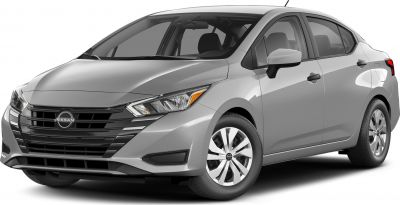
| Production: | 2022-present |
|---|---|
| Model Year: | 2023 |
| Length: | 4496 mm177.0 in |
| Width: | 1740 mm68.5 in |
| Height: | 1455 mm57.3 in |

| Production: | 2019-2022 |
|---|---|
| Model Year: | 2020 |
| Length: | 4496 mm177.0 in |
| Width: | 1740 mm68.5 in |
| Height: | 1455 mm57.3 in |
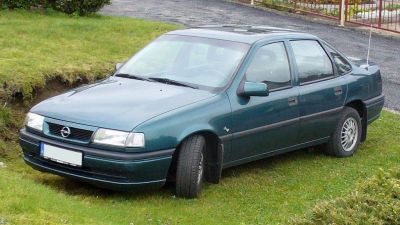
| Production: | 1992-1995 |
|---|---|
| Model Year: | 1992 |
| Length: | 4432 mm174.5 in |
| Width: | 1706 mm67.2 in |
| Height: | 1400 mm55.1 in |
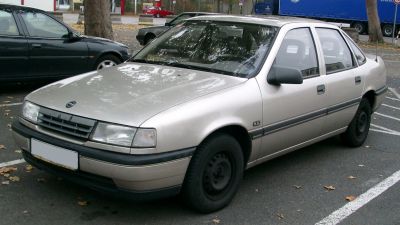
| Production: | 1988-1992 |
|---|---|
| Model Year: | 1988 |
| Length: | 4432 mm174.5 in |
| Width: | 1706 mm67.2 in |
| Height: | 1400 mm55.1 in |
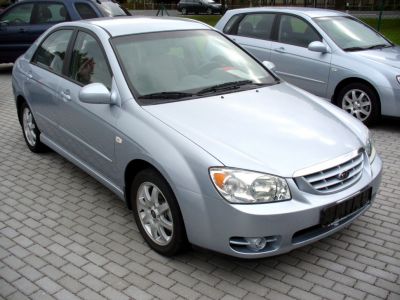
| Production: | 2004-2006 |
|---|---|
| Model Year: | 2004 |
| Length: | 4480 mm176.4 in |
| Width: | 1735 mm68.3 in |
| Height: | 1470 mm57.9 in |

| Production: | 1986-1996 |
|---|---|
| Model Year: | 1987 |
| Length: | 4430-4480 mm174.4-176.4 in |
| Width: | 1705 mm67.1 in |
| Height: | 1405 mm55.3 in |
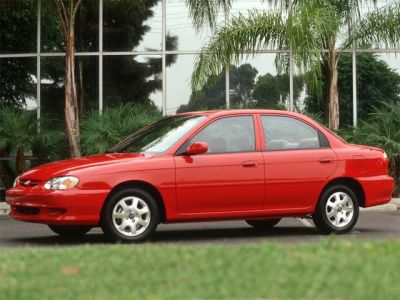
| Production: | 1998-2003 |
|---|---|
| Model Year: | 1998 |
| Length: | 4427-4510 mm174.3-177.6 in |
| Width: | 1711-1720 mm67.4-67.7 in |
| Height: | 1415 mm55.7 in |
